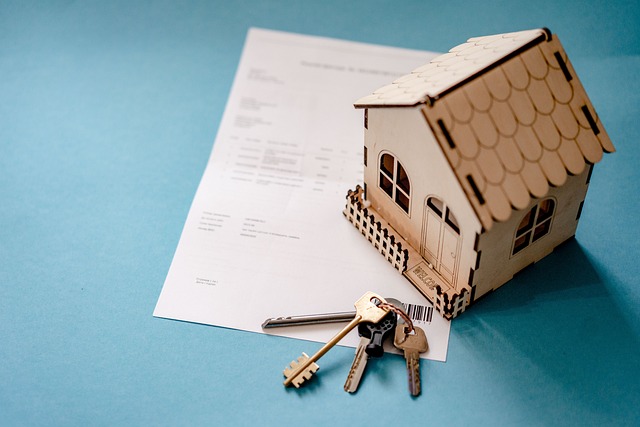In Singapore, Executive Condominiums (ECs) require residents to contribute to maintenance fees that are essential for upholding the quality of communal facilities like pools, gyms, and playgrounds. These fees, managed by the Housing & Development Board (HDB), Maintenance Corporation Strata Title (MCST), or Strata Titles Boards (STB), vary based on the EC's size, age, and amenities provided. Homeowners must understand that these charges are a long-term financial commitment affecting monthly expenses and can change over time due to inflation, aging infrastructure, and evolving service demands. Strategic planning, transparent budgeting, and community participation are crucial for managing costs effectively. Homeowners should consider establishing a sinking fund for anticipated major maintenance works and take advantage of government grants to alleviate financial pressure. By staying informed and actively involved in their EC's management, residents can help maintain a high standard of living while keeping maintenance expenses manageable in Singapore.
navigating the intricacies of Estate-Centred (EC) maintenance fees in Singapore is a pivotal aspect for homeowners, as these costs not only ensure community living standards but also influence property values. This comprehensive guide delves into the nuances of EC maintenance fees, elucidating the factors that affect these expenses, and providing a detailed breakdown of costs associated with various housing types. From the vital role of the Management Corporation Strata Title (MCST) to the challenges posed by aging infrastructure, understanding budget planning for long-term maintenance becomes imperative for EC homeowners in Singapore. With a focus on practical strategies to manage and potentially reduce these fees, this article is an essential read for anyone looking to maintain or purchase an EC unit with confidence.
- Overview of EC Maintenance Feeds in Singapore Ec
- Understanding the Variables Influencing EC Maintenance Costs
- Breakdown of Yearly Maintenance Fees for Different Housing Types
- The Role of the Management Corporation Strata Title (MCST) in EC Maintenance
- Specific Maintenance Concerns and Associated Costs for Singapore Ec Residents
- Budget Planning: Projecting Long-Term Maintenance Expenses for EC Homeowners
- The Impact of Aging Infrastructure on Maintenance Fees in Singapore Ec
- Strategies for Managing and Reducing Maintenance Fees in EC Housing Developments
Overview of EC Maintenance Feeds in Singapore Ec

In Singapore, EC maintenance fees are an integral aspect of owning and operating an Executive Condominium (EC), which is a hybrid housing model designed for upgraders who wish to stay in a public housing estate but have higher income ceilings. These fees cover the costs associated with maintaining the communal facilities and amenities that enhance the living experience within the EC. Residents can expect to contribute to the EC’s Maintenance and Conservation Fund (MCF) as stipulated by the Housing & Development Board (HDB). The MCF is utilized for the upkeep of shared spaces like swimming pools, gyms, playgrounds, lifts, and landscaped areas. It’s crucial for EC residents to understand that these fees are not only mandatory but also contribute significantly to preserving the quality and value of their living environment. The cost of maintenance fees can vary depending on the size and facilities of the EC, with larger complexes or those with more extensive amenities typically commanding higher fees. Prospective EC residents must consider these ongoing costs when evaluating the affordability and long-term investment potential of such properties. In Singapore’s property market, where real estate trends can shift, the consistent management and maintenance of ECs are key to retaining their appeal and desirability among homebuyers.
Understanding the Variables Influencing EC Maintenance Costs

In Singapore, the costs associated with maintaining an Executive Condominium (EC) are subject to a multitude of variables that can influence the overall expenditure. These variables encompass everything from the size and age of the property to the specific services included in the maintenance package. For instance, older ECs may require more frequent or intensive maintenance due to wear and tear, potentially leading to higher costs compared to their newer counterparts. The scale of the property also plays a role; larger units typically demand more resources for upkeep. Additionally, the services opted for by the residents can significantly affect the fees. Basic maintenance plans may cover routine tasks like trash removal and common area cleaning, while more comprehensive packages might include landscape gardening, pest control, and even security services. It’s imperative for EC residents to understand these factors to budget effectively for ongoing maintenance costs.
Furthermore, the local regulations and standards set by Singapore’s housing boards and property management companies further dictate the maintenance costs. These regulations ensure that all ECs adhere to certain quality and safety benchmarks, which necessitate adherence to specific procedures and use of approved contractors for repairs and renovations. The stratified management approach, where each floor or block within an EC is managed separately, can also impact the costs, as it may lead to tailored maintenance plans that are more specific to the needs of those particular units. Understanding these variables is crucial for both current and prospective EC residents to anticipate and manage their maintenance fees effectively in Singapore’s property market.
Breakdown of Yearly Maintenance Fees for Different Housing Types

In Singapore, the EC maintenance fees vary significantly across different housing types, reflecting the diverse needs and sizes of these residences. For HDB executive condominiums, residents can expect to pay annual maintenance fees that are tailored to the scale and amenities of their specific type. These fees encompass the upkeep of communal facilities, security services, and the general maintenance of the property’s structure and common areas. For instance, a three-room EC will have different maintenance fee costs compared to a five-bedroom unit due to the differing sizes and associated operational expenses. The Singapore EC maintenance fees are calculated based on a formula provided by the Housing & Development Board (HDB), which includes factors such as the size of the estate, the cost of maintenance works, and the provision for sinking funds to cater to future large-scale repairs or upgrades. Residents receive annual statements detailing these charges, which are due regardless of ownership status—whether the unit is owned outright, under a housing loan, or if it’s being rented out. It’s advisable for EC residents to budget for these fees as part of their long-term financial planning, as they are an integral part of owning property within this unique class of public-private housing in Singapore.
The Role of the Management Corporation Strata Title (MCST) in EC Maintenance

In Singapore, the management of Executive Condominiums (ECs) is a critical responsibility that falls under the purview of the Management Corporation Strata Title (MCST). This entity plays a pivotal role in maintaining the high standards of living and property values within ECs. The MCST oversees the day-to-day management of common property, which includes the upkeep of facilities such as pools, gyms, and landscaped areas. It also ensures compliance with regulations, manages finances including the collection of maintenance fees, and coordinates major repairs and renovations. These maintenance fees are essential for the sustainability of ECs, funding the operational costs and reserve funds required to maintain the property’s integrity over time. In Singapore Ec maintenance, the MCST collaborates with residents, strata managers, and service providers to address issues promptly, thereby safeguarding the interests of all stakeholders and preserving the quality of life for residents. The efficient management of these fees and costs is a testament to the collective efforts of the community living in ECs and underscores the importance of collaborative governance in real estate maintenance.
Specific Maintenance Concerns and Associated Costs for Singapore Ec Residents

residing within the confines of an Executive Condominium (EC) in Singapore necessitates a clear understanding of the maintenance fees and associated costs that residents must bear. These fees are critical for the upkeep and management of shared facilities and common areas, ensuring they remain pristine and operational for the enjoyment of all residents. For Singapore EC residents, the maintenance fees are usually collected through a sinking fund, which is managed by the Strata Titles Boards (STB) or private managing agents. These fees can vary depending on the size of the development, the scale of amenities offered, and the management company in charge.
Homeowners should anticipate regular monthly or quarterly payments for routine maintenance, including cleaning services, landscape gardening, and general repairs. Additionally, extraordinary costs may arise from time to time, such as major renovations or unexpected repairs following damage by natural disasters. These additional expenses are typically funded by special levies, which are clearly communicated to residents in advance. It is also important for potential EC buyers to consider the long-term financial commitment associated with these maintenance fees, as they can impact one’s monthly outlay and should be factored into the decision-making process when assessing the affordability of an EC unit. Prospective residents are advised to review the maintenance fee history and projected budget of the EC development to gain a comprehensive understanding of potential costs before making a commitment.
Budget Planning: Projecting Long-Term Maintenance Expenses for EC Homeowners

Singapore EC homeowners must engage in meticulous budget planning to anticipate and manage long-term maintenance expenses effectively. The Executive Condominium (EC) maintenance fees and costs are not static; they can fluctuate over time due to a variety of factors such as inflation, aging infrastructure within the property, and changes in service tariffs. To ensure financial preparedness, homeowners should consider the initial service and conservancy charges set by the managing agent, which typically cover general cleaning, lift maintenance, and waste disposal services. These charges are subject to regular reviews and adjustments as per the Master Conservancy Agreement (MCA) stipulations. Additionally, EC residents must factor in the unpredictable costs for unexpected repairs or upgrades, which may arise from the need to replace old facilities or systems, or to enhance amenities in line with evolving lifestyle preferences. Prudent homeowners will allocate a portion of their annual budget to an sinking fund—a savings plan designed to accumulate funds specifically for foreseeable large-scale maintenance works, thereby smoothing out the financial impact when such expenses inevitably occur. By doing so, Singapore EC homeowners can maintain the value and quality of their living environment while safeguarding their financial well-being in the long term. It is advisable to consult with financial advisors or professional property managers who specialize in Singapore EC maintenance to gain a comprehensive understanding of these costs and to devise an effective budgeting strategy tailored to individual circumstances.
The Impact of Aging Infrastructure on Maintenance Fees in Singapore Ec

Strategies for Managing and Reducing Maintenance Fees in EC Housing Developments

Residents of executive condominium (EC) housing developments in Singapore face maintenance fees that are critical for the upkeep and management of their living environment. These fees are a shared responsibility among homeowners, ensuring that common areas, facilities, and services are maintained to a high standard. To effectively manage and potentially reduce these costs, EC residents can adopt several strategies. Firstly, understanding the fee structure and what it covers is essential. Transparent budgeting and clear communication from the management council about how fees are allocated can empower residents to make informed decisions. Secondly, engaging in community-led initiatives, such as organizing communal events or shared services, can enhance resident engagement and cooperation, leading to more efficient resource utilization. Additionally, residents should consider the long-term implications of any refurbishment or major repair plans, opting for cost-effective solutions that do not compromise quality. Regular maintenance checks and timely repairs can prevent small issues from escalating into more expensive problems. Lastly, staying informed about government grants and subsidies available for EC maintenance can provide financial assistance, further alleviating the costs borne by residents in Singapore EC housing developments. By implementing these strategies, homeowners can contribute to a sustainable living environment while keeping maintenance fees manageable.
In conclusion, managing the maintenance fees and costs associated with Executive Condominiums (ECs) in Singapore is a multifaceted task that requires a clear understanding of various influencing factors, from the role of the Management Corporation Strata Title (MCST) to the challenges posed by aging infrastructure. Homeowners in ECs must be aware of the yearly maintenance fees specific to their housing type and anticipate long-term expenses through effective budget planning. By implementing strategic measures to manage and potentially reduce these costs, residents can maintain the value and quality of their living environment. This comprehensive guide has shed light on the intricacies of EC maintenance in Singapore, equipping homeowners with the knowledge necessary for informed decision-making regarding their property’s upkeep. It is imperative for EC residents to stay proactive and engaged with their community’s maintenance management to ensure sustainable living conditions now and into the future.
